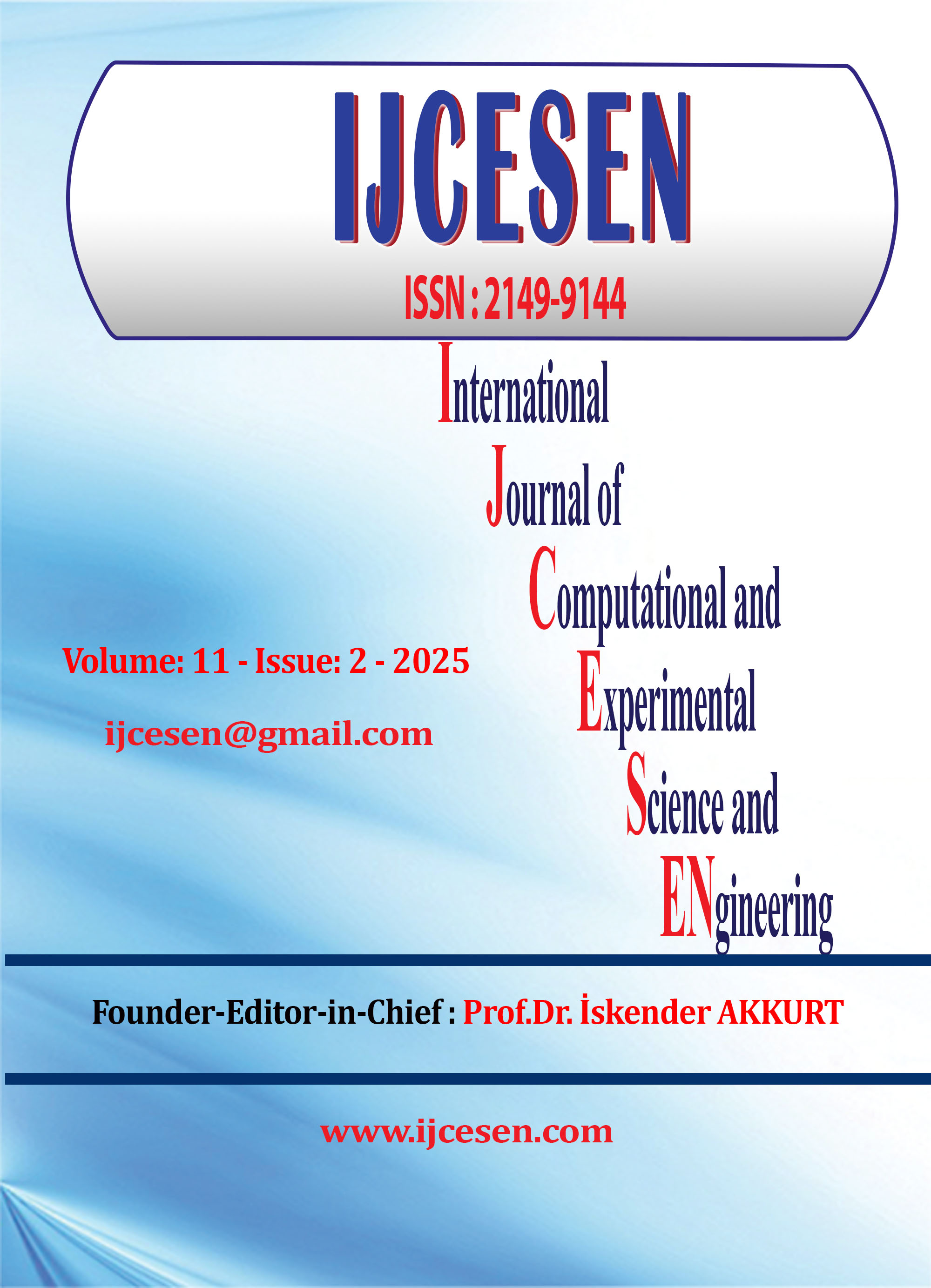Development of Intrusion detection system for VANET using Machine Learning
DOI:
https://doi.org/10.22399/ijcesen.1502Keywords:
VANETs, Intelligent Transportation Systems, Intrusion Detection System (IDS), Fuzzy Logic-based Clustering, Cluster Head (CH) SelectionAbstract
With the proliferation of vehicular technology, modern vehicles are fortified with ever more electronic maneuvers. This advancement ratifies the evolution of Intelligent Transportation Systems (ITS)to provide services like shared travel, smart driving, on-the-go Internet, etc. As a traditional application of ITS, a Vehicular Ad hoc Network (VANET) enables smart communication between vehicle nodes and network infrastructures to provide various expedient services such as road safety, data sharing, traffic management, parking assistance, entertainment, route recommendation, mobile payment, and even cloud applications. The high-speed mobile nodes (vehicles) in VANET perform very differently from other wireless communication networks and have a set of distinct features such as frequent link disconnection, highly dynamic topology, limited coverage area, and heterogeneous system architecture that may affect the performance and service quality of the VANET significantly. With this motivation, this work attempts to develop distributed cooperative cluster-based IDS to identify potential cyberattacks in VANET effectively. Firstly, this work develops a stable and reliable clustering method named Fuzzy Logic-based Clustering (FLC) to create a collaborative and reliable communication environment. A new fuzzy logic-based CH node selection algorithm is also developed based on node degree, average velocity difference, and relative velocity of the vehicle to create a more robust clustering structure with minimum cost in VANET
References
Chen, Y., Fan, M., (2014) A Novel Mobility-Based Clustering Algorithm for VANETs, Sensors & Transducers, 176(8);189-195.
Alabbas, H & Huszák, A (2020) A New Clustering Algorithm for Live Road Surveillance on Highways based on DBSCAN and Fuzzy Logic, International Journal of Advanced Computer Science and Applications, 11(8);580–587.
Abdel-Halim, IT, Fahmy, HMA, Din, AMB (2019), Mobility predictionbased efficient clustering scheme for connected and automated vehicles in VANETs’, Comput. Netw., 150;217–233.
Ahmad, A, Adnane, A & Franqueira, V (2017), A systematic approach for cyber security in vehicular networks, J. Comput. Commun., 4;38-62.
Alghamdi, SA (2020), Novel path similarity aware clustering and safety message dissemination via mobile gateway selection in cellular 5Gbased V2X and D2D communication for urban environment, Ad Hoc Networks, 103;102150.
Aloqaily, M, Otoum, S, Al Ridhawi, I, &Jararweh, Y (2019), An intrusion detection system for connected vehicles in smart cities, Ad Hoc Netw., 90;101842.
Alsarhan, A, Kilani, Y, Al-Dubai, A, Zomaya, AY & Hussain, A, (2020), Novel Fuzzy and Game Theory Based Clustering and Decision Making for VANETs, IEEE Transactions on Vehicular Technology, 69(2);1568-1581.
Arif, M, Wang, G, Bhuiyan, MZA, Wang, T & Chen, J (2019), A survey on security attacks in VANETs: communication, applications and challenges, Vehicul. Commun. 19;100179.
Arkian, HR, Atani, RE, Diyanat, A & Pourkhalili, A (2015), A clusterbased vehicular cloud architecture with learning-based resource management, J Supercomput, vol. 71(4);1401–1426.
Azam, F, Kumar, S & Priyadarshi, N (2021), A novel road side unit assisted hash chain based approach for authentication in vehicular Ad-hoc network, Global Transitions Proceedings, 2(2);163-168.
Azees, M, Deborah, LJ & Vijayakumar, P (2016), Comprehensive survey on security services in vehicular ad-hoc networks, IET Intelligent Transport Systems, 10(6);379–388.
Bhatti, DMS, Rehman, Y, Rajput, PS, Ahmed, S, Kumar, P & Kumar, D (2021), Machine learning based cluster formation in vehicular communication, Telecommunication Systems: Modelling, Analysis, Design and Management, 78(1);39–47.
Olola, T. M., & Olatunde, T. I. (2025). Artificial Intelligence in Financial and Supply Chain Optimization: Predictive Analytics for Business Growth and Market Stability in The USA. International Journal of Applied Sciences and Radiation Research, 2(1). https://doi.org/10.22399/ijasrar.18
M. Shanthalakshmi, & R.S. Ponmagal. (2025). An Intelligent Intrusion Detection System for VANETs Using Adaptive Fusion Models. International Journal of Computational and Experimental Science and Engineering, 11(1). https://doi.org/10.22399/ijcesen.935
Ibeh, C. V., & Adegbola, A. (2025). AI and Machine Learning for Sustainable Energy: Predictive Modelling, Optimization and Socioeconomic Impact In The USA. International Journal of Applied Sciences and Radiation Research , 2(1). https://doi.org/10.22399/ijasrar.19
M. Shanthalakshmi, & R.S. Ponmagal. (2025). Optimizing Secure Communication in Intelligent Transportation Networks with Certificate-less Authorization in VANETs. International Journal of Computational and Experimental Science and Engineering, 11(1). https://doi.org/10.22399/ijcesen.934
Downloads
Published
How to Cite
Issue
Section
License
Copyright (c) 2025 International Journal of Computational and Experimental Science and Engineering

This work is licensed under a Creative Commons Attribution 4.0 International License.





